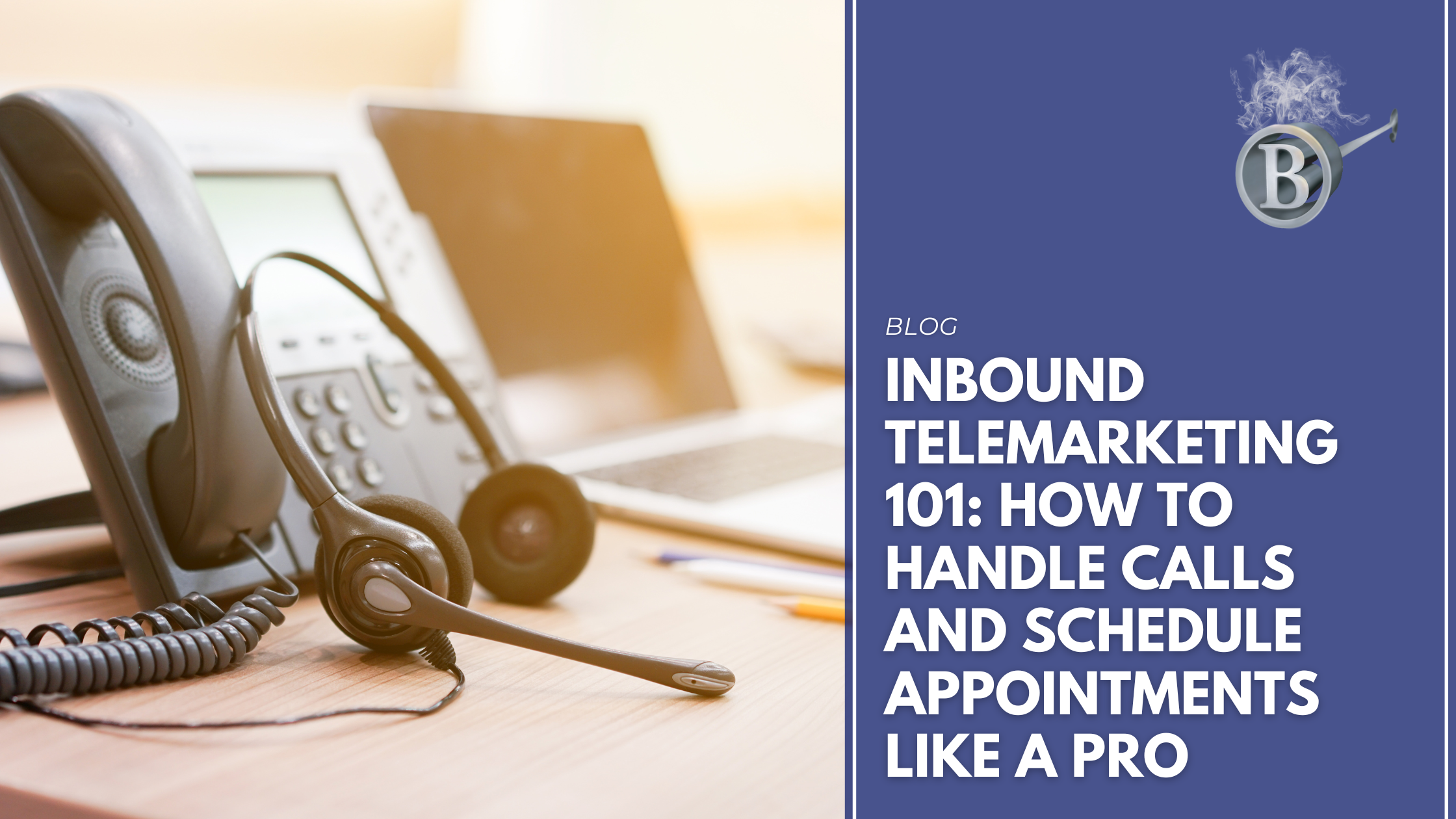Businesses in the Brazos Valley often ask about how inbound telemarketing can help their business. Inbound telemarketing is a powerful tool for any business looking to connect with potential clients and grow their customer base. It’s all about making the most of every incoming call and turning those conversations into valuable opportunities. With so many people spending so much time relying on phones for their information and the rise of mobile marketing, many potential customers lean towards picking up a phone to seek services or products. If you’re new to inbound telemarketing or just want to refine your skills, this “how-to” guide will walk you through the essentials of handling calls and scheduling appointments effectively.
1. Preparing for the Call
Before you answer the phone, a bit of preparation can make a huge difference in how smoothly the call goes. Lots of businesses in the Bryan-College Station area are taking advantage of telemarketing, but intentional and detailed preparation can help set your business apart.
- Draft a Call Script: Create a flexible script that outlines the key points you need to cover. Start with a friendly greeting, introduce your agency, and outline the purpose of the call. Include a few questions to gather information about the caller’s needs. Think of the script as a helpful guide to keep the conversation on track, but don’t be afraid to improvise and adapt as needed.
- Organize Your Workspace: Make sure your workspace is tidy and free from distractions. Have your calendar, notes, and any other relevant information at hand. A clutter-free environment helps you stay focused and professional.
- Research the Caller (If Possible): If you have access to any information about the caller before picking up, use it to your advantage. Knowing their company or previous interactions can help you tailor your approach and make the conversation more relevant.
2. Answering the Call
When the phone rings, how you handle the initial greeting can set the tone for the entire conversation.
- Greet the Caller Warmly: Answer the phone with a friendly and professional tone. For example: “Hello! Thank you for calling [Your Agency’s Name]. This is [Your Name]. How can I help you today?” A warm greeting makes the caller feel welcomed and valued.
- Listen Actively: Allow the caller to speak and explain their needs without interrupting. Active listening shows that you are engaged and helps you gather the necessary information to assist them effectively.
- Ask Clarifying Questions: Once the caller has shared their initial concerns or needs, ask follow-up questions to ensure you fully understand what they’re looking for. For instance: “Can you tell me a bit more about your goals for social media marketing?”
3. Scheduling the Appointment
Once you have a clear understanding of the caller’s needs, it’s time to schedule an appointment. This step is crucial for turning interest into actionable business opportunities.

- Offer Several Time Options: Provide the caller with a few options for appointment times to choose from. For example: “I’m available on Tuesday at 2 PM or Thursday at 10 AM. Which of these times works best for you?” Offering options shows flexibility and makes it easier for the caller to find a convenient time.
- Confirm the Details: After the caller picks a time, confirm the appointment details to ensure everything is clear. Repeat the date, time, and any specific information they need to prepare. For example: “Great, we’re scheduled for Tuesday at 2 PM. I’ll send you a confirmation email with all the details. Is there anything specific you’d like to discuss during our meeting?”
- Send a Confirmation Email: Right after the call, send a confirmation email with all the appointment details. Include any relevant documents or information that might help them prepare. This follow-up helps prevent misunderstandings and reinforces your professionalism.
- Prepare for the Meeting: Before the appointment, review any notes from the call and gather any materials or information that might be relevant. Being well-prepared shows that you value the caller’s time and are committed to providing valuable insights.
4. Follow-Up
The follow-up process is just as important as the call itself. It ensures that the appointment stays on track and helps build a positive relationship with the caller.
- Send a Reminder: The day before the appointment, send a reminder email or make a quick call to confirm the meeting time. This helps reduce the chance of no-shows and keeps the appointment fresh in their mind.
- Be Available for Questions: Let the caller know they can reach out if they have any questions or need to reschedule. Providing a direct way to contact you enhances their experience and fosters a positive relationship.
- Review and Reflect: After the appointment, take some time to review the outcome and reflect on the process. What worked well? What could be improved? Continuous improvement helps you refine your telemarketing skills and better handle future calls.
Ready to Start Handling Calls?
Handling inbound calls and scheduling appointments efficiently is a key skill for any successful telemarketing strategy. By preparing thoroughly, greeting callers warmly, asking the right questions, and following up diligently, you can turn each call into a valuable opportunity for your business. Remember, every interaction is a chance to build relationships and showcase your agency’s expertise. If you need help setting up an inbound telemarketing system and procedures for your business, Branding Iron Management is happy to help! Give us a call today.
About Branding Iron Management
Branding Iron Management is a dedicated media management company based in the Bryan-College Station area, boasting over 60 years of experience. Proudly hiring talent from Texas A&M University, our team is comprised almost entirely of Aggies, reflecting our commitment to helping local businesses.
We specialize in helping businesses grow through tailored media strategies, digital marketing, graphic design, and social media management. Our comprehensive marketing management services simplify the complexities of advertising, enabling you to effectively engage your target audience and achieve your business goals. At Branding Iron Management, we are in the business of helping businesses grow. Call at (979) 571-9919 or email Branding Iron Management for a free consultation today.
1733 Briarcrest Dr. Bryan, TX 77803
979-571-9919










